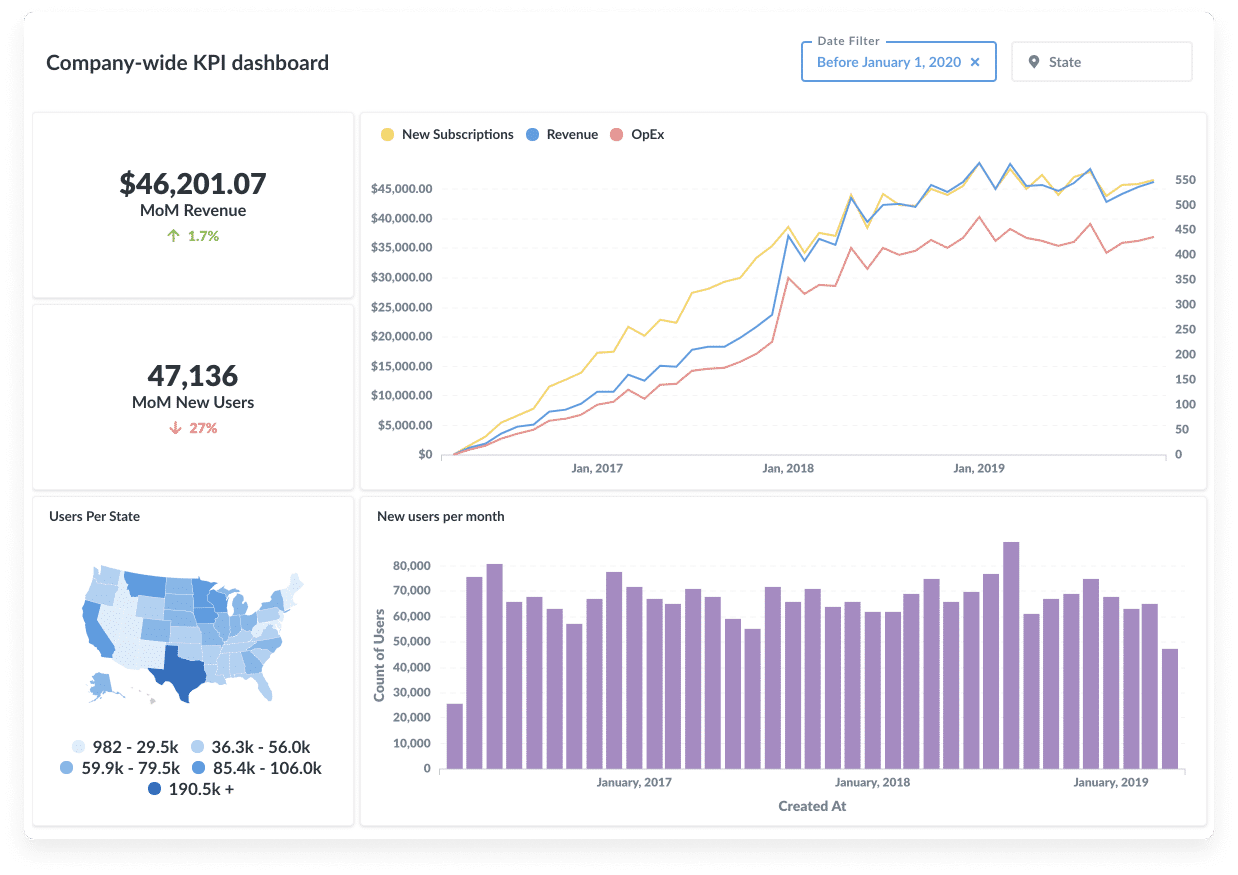

Sorry, silly me I forget to mention the issue Im facing :bow: Is my test scenario wrong? Or how do you manage to work with Persistent volume using AWS EBS? Allow metabase container to be started as non-root 13214 Merged flamber mentioned this issue on Kubernetes non-privileged container with arbitrary user/groupid 13829 Closed camsaul closed this as completed in 13214 on camsaul added this to the 0. If there is no need to do the initial setup again. I destroy my pods after I set initial metabase setup Metabase currently has four main data container classes designed for experiments with specific.How I test if my persistent volume is right or not:

Metadata: name: "metabase-pv" spec: capacity: storage: 5 GiĪwsElasticBlockStore: volumeID: MY-EBS-VOLUME-ID My Persistent Volume yaml file: apiVersion: v1 The configuration section lists the parameters that can be configured.

My Persistent Volume Claim yaml file: apiVersion: v1 The command deploys Metabase on the Kubernetes cluster in the default configuration. mountPath : "/metabase-ebs" name : metabase-volume Here is Deployment yaml file: apiVersion : extensions/v1beta1
#Metabase kubernetes how to#
In this first video in the series, we cover how to extract the web application from IIS and use the exported ZIP file to create a new container image on Windows Admin Center.I try to create persistent volume with AWS Elastic Block Store, so whenever I deployed a metabase pods no need to worry to losing all initial data I've settled up. With WAC you can point to a ZIP file from Web Deploy and WAC will do the hard work for you! Windows Admin Center: The updated Containers extension now supports Web Deploy ZIP files as a source for new container images.Plus, you can reconfigure some parameters like Database Connection in the process. How I test if my persistent volume is right or not: I destroy my pods after I set initial metabase setup. We use Google auth for user authentication. apiVersion: v1 kind: PersistentVolume metadata: name: 'metabase-pv' spec: capacity: storage: 5Gi accessModes: - ReadWriteOnce persistentVolumeReclaimPolicy: Recycle awsElasticBlockStore: volumeID: MY-EBS-VOLUME-ID fsType: ext4. As a metabase DB we use AWS RDS Postgresql. You can create dashboards where you can add your graphs. It works with Slack and you can create questions/graphs from Slack. To access a Cloud SQL instance from an application running in Google Kubernetes Engine, you can use either the Cloud SQL Auth proxy (with public or private IP). We run metabase in k8s cluster in AWS, with using HELM chart. Metabase has a lot of features and settings, but here I will just mention a few: Work with large databases and configure when and how they should scan the data. We have kept a close eye on the SSA feature. Kubernetes clients that use SSA can safely share the management of Kubernetes resources by making the API Server responsible for computing diffs and resolving conflicts. Web Deploy makes the process of exporting an IIS web site way simpler than doing it manually. we can see the time increased from hundreds of ms to seconds (the max measured time was 11 seconds just to get reponse from auth page of metabase) we measure first byte response time. One such development is Server-Side Apply (SSA), which is a resource management strategy that was introduced in Kubernetes v1.18. Web Deploy: We'll be using it to export the application from IIS.Sample web application: The process shown in the video can be performed in your application, but if you just want to test it, you can use this sample app as shown in the series.Here are some details on the tools used in this video, so you can try for yourself:
#Metabase kubernetes series#
In this video series we will go over the entire process of containerizing a web application running on Windows Server 2012 R2 on-premises to Azure with Azure Kubernetes Services. The process can be a bit challenging if you don't know how to get started, and more importantly if you don't have the right tools for the job. Containers are becoming extremely popular these days and many ITPros are being asked to modernize existing applications and run those apps on Kubernetes.


 0 kommentar(er)
0 kommentar(er)
